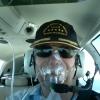Hottest CHT during climb
-
Members Online
- AspiringOwner
- AndreiC
- Nico1
- MikeOH
- Aviationist
- Alan Maurer
- Kesk
- FoxMike
- 201er
- Rwsavory
- Medicpilot
- jetdriven
- TCC
- Flyler
- KLRDMD
- Scott Ashton
- Niko182
- redbaron1982
- Justin Schmidt
- bigmo
- tcal780
- Jake@BevanAviation
- Marc_B
- jrwilson
- AdamJD
- ericrynehess
- RangerM20
- N201MKTurbo
- Shadrach
- Yetti
- hammdo
- N204TA
- Skyland
- warrenehc
- Scottknoll
- good2eat
- NickB


Recommended Posts
Join the conversation
You can post now and register later. If you have an account, sign in now to post with your account.